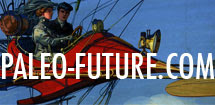
Dr. Paul R. Ehrlich, author of the 1968 book
The Population Bomb, had some crazy ideas about the future. Ehrlich, so concerned about what he saw as a population explosion, wanted forced birth control, child lotteries and the "
spiking of foreign food aid with antifertility drugs."
I recently found a 1970 edition of his book and now offer you excerpts from his bizarrely specific "Scenario 1" (of which there were three) featured in the second chapter.
Ehrlich stipulated that, "...none of [the scenarios] will come true as stated, but they describe the kinds of disasters that
will occur as mankind slips into the famine decades."
"In 1972 news of the war in Thailand occupies the headlines of the United States, China has catastrophic floods, a breakdown of communications, and massive famines.
Increasingly serious food riots in China, India, and Brazil are a matter of great concern to the Central Intelligence Agency."
"In early January, 1973, large numbers of Chinese troops move into the Thai conflict for the first time. They receive tactical air support from bases in North Vietnam."
"After an unheeded warning,
tactical nuclear weapons are used in strikes on selected Chinese air bases, supply complexes, and staging areas in North Vietnam, Thailand, and southern China. With the connivance of the Russians a preemptive strike is also launched against China's nuclear facilities. Unfortunately, our defenses are not sufficient to prevent five 'dirty' Chinese thermo-nuclear devices, transported in submarines, from being detonated in the sea off our West Coast. Fallout results in
more than 100 million American deaths."
If you thought Scenario 1 was incredible stay tuned for Scenarios 2 and 3.
















































